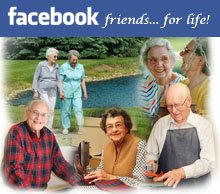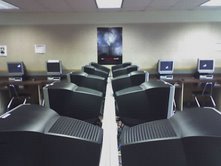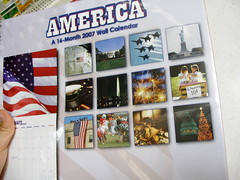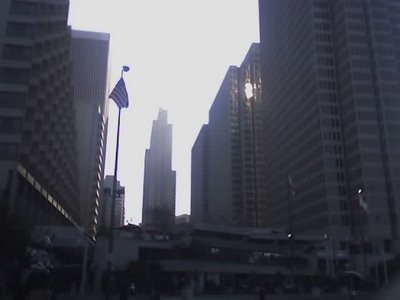Foster and Partner’s new Philology Library, at the Free University in Berlin, helps to create an interior reading environment that emulates the sense of the ambient environment for reading outside—one can sense the clouds moving above—but the environment is not virtual, it is rather reflective of the environment’s conditions and responsive to them. Behling, Foster’s sustainability leader,
“compares it to sitting with a white umbrella under a tree and watching leaves cast shadows to create a beautiful play of light and pattern”. Ironically this makes me think of interior thematized environments that have been constructed to simulate elsewhere or external localities and their ambient effects... such as the interior external environments in Las Vegas' Venetian, Paris, New York New York, and Caesars' Palace hotels... and Disneyland and World, too. Yet it is part of the architect’s job to satisfy needs and wants, including those of a satisfying experience felt while mingling with nature's elements.
As I sat outside today in front of the Science Library going through my notes for my research, I was greatly enjoying the blinding sunlight coming across the red brick tiles, and the heat of the rays, and the light breeze, and the sway of the shadows through the trees, and the light sounds of chatter and leaves and birds—all that ambient stuff. Is it wrong for architecture to replicate feelings of these things, whether intentionally simulated, or in their distilled essence?
The other day during Political Economy and the Environment class I appreciated the benefit of
biomimicry. Water, the subject of our current discussion, is really an amazing thing; useful in both a biological and metaphorical capacity. Professor Haddad talked about how plants are able to use water. Because of the way water molecules are designed, the plants can then suck them up through their roots, and the water flows upward! This is amazing. Water treatment plants, by the way, use a distilled and strengthended natural process: they do the same things as wetlands, but process and clean the water at just a faster rate. So if we look at nature and its processes, designs, systems, we can find some useful ideas on how to solve design problems of our own.
So, Foster and Partners’ library uses some ideas of biomimicry in both its aesthetic and technical design—“green”-wise, it apparently is a product from years of research, as well—to create an experience that is satisfying and healthy.
Anyway, back to airports. If airports are interior spaces (aside from the post-modern connotation, “interior” really doesn’t say much just yet) that people pass through like external environments (they contain destinations and gates inside of them that are connected by routes) like streets, alleys, paths of any sort, then it would make sense for airport spaces to reflect things people like in satisfying and healthy external environments.
But since airports are not simply external environment passage spaces (spaces, for the most part, used strictly for the movement of people or goods), they are more like external environment places of destination that can contain passages and destinations, gates, inside of them: like parks, piazzas, malls, forests, and a city’s downtown district, to name a few.
So an airport is similar to a park, piazza, or downtown because it is relatively “public” and used to connect people to other places but also is a destination in its self. Although, unlike a park, piazza, or downtown, people generally do not go to airports specifically to relax or enjoy oneself. In that sense, then, airports are more like malls because their purpose is more functionally rooted in facilitating a type of commercial transaction. But then again, many people go to malls to just hang-out… but maybe that’s because the mall has replaced the park, piazza, or downtown in postmodern life…
But rather than trying to draw analogies with other types of spaces to the airport, I think an airport is rather something quite unique. Airports have “airport-ness”; that’s what 1950s architecture critic G.E. Kidder-Smith said in his book The New Architecture of Europe (pp 170, Gordon). But I have to content I think his “airport-ness” was supposed to reflect a different ideal, one rather obsessively modern, functional, pure, sleek, fast, and all that 20th century Industrial-Age fashion. But at the same time, his eye was right about the meaning of the airport: that its heart and soul, purpose and life, was totally different from any space, environment, facility, ever before. An architecture of airports wasn’t meant to have neo-classical columns or Spanish architectural flair of the regional ilk; airports were doing their own thing, and their bodies were meant to reflect the growing muscles and bones inside of them.
So, if airports aren’t really anything but airports, like a seaport isn’t really anything but a seaport, then how does it still function and feel like an external environment of sorts? Maybe that’s because, also like a seaport, you can place all kinds of non-seaport stuff inside of a seaport and extend it way beyond a simple seaport… like the way Barcelona’s waterfront is so many amazing things, from restaurants, to museums, to exhibition space, to beaches, to clubs, to apartments, to promenades, to road- and transit-ways, and also that thing called a harbor.
Then maybe an airport is an airport and nothing else, but it grows like an external environment (and people move through it like one), and can be developed like a seaport. That would make the airport strikingly close to a real city, especially given the fact that airports have hotels, businesses, insanely consumptive infrastructure systems, and all the other living, modern city components… some airports even market themselves like cities, a destination for tourists in themselves…
The
Frankfurt Airport City in Germany is like that. There are over 500 companies employing over 65,000 people at the Frankfurt Airport City. The “City” gets over 50 million international passengers a year. The city’s website also boasts that the its location in Germany makes it a good place to shop and sell because there are “35 million well-heeled consumers [living] within a catchment area extending 200 km from the airport in all directions — that is equivalent to about 43 percent of Germany's population”.
But, wait, did you catch that? Frankfurt Airport City, because of its geographic location (“heart” of Europe, they tell the traveler), is also a city because of the cities around it. The cities around the airport city feed off of the airport, and the airport city feeds off of them; a symbiotic relationship between “real” cities (note the plural) and “airport city” (note the singular).
But an airport city can be “real”, it’s not fake, it just looks a little different and people use it a bit differently. So maybe the question of what an airport is—what type of environment it is—is a question of how real is a landscape, or nature, or any kind of pure ideal that can be doctored and regrown, manicured and planted, or left alone to “organically” become old, wizen, haggard, diverse, multifaceted, and “natural”?




















